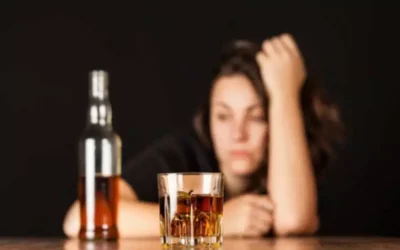Taking these into account, we next apply the risk environment framework to the current context to analyse how anti-doping policies have created an intolerant environment that drives doping into the shadows of sport, increasing various risks to athletes along the way. Following this, we examine how groups have organized systems of doping using strategies, similar to those outlined above, that work to reduce harm to athletes and enable safer use of PEDs. As suggested by Rhodes (2009) drug harms are shaped by risk environments and a risk environment framework can therefore promote an improved understanding of harm, and harm reduction, as a matter of ‘contingent causation’ (p. 193). Risk environments can, broadly, be understood as the ‘space – whether social or physical – in which a variety of factors interact to increase the chances of drug related harms’ (Rhodes, 2002, p.91). Substance use research and policies have historically tended to focus on the individual and individual responsibility for risky behaviours (Rhodes, 2009). This is a trend mirrored in sport doping research that focuses heavily on motives and prevention at the individual level.
Using the power of sports to prevent youth crime and drug use
Seeking appropriate treatment for addiction is the only way to stop the unhealthy cycle that ruins lives and careers, yet athletes with drug problems are more reticent than most to seek that help. The use of prescription opioids for more than a few weeks leads to tolerance and potential addiction. When an athlete builds up a tolerance to a medication, they start to need more and more of the substance to receive the same level of pain-relief effects. Tolerance escalates to dependence with repeated use of the drug, which causes neurons in the brain to adapt to the presence of the drug and makes it impossible to function normally without the substance.
Could menopause be delayed? The answer could lead to longer lifespans for women
- Blood doping can present the athlete with the risk of diseases such as HIV, hepatitis B, and C.
- It might also be the case that some sports and countries simply run fewer tests if it can be established that the levels of doping risk are low.
- There appears a need for more rigorous high-quality studies looking at direct head-to-head comparisons between athletes and non-athletes in the field of addiction with an emphasis on treatments.
This statement is the consequence of considering the desire for performance-enhancement as a societal phenomenon and acknowledging the association of athletic success and appearance with strength, competence, social ability, or beauty (Ahmadi and Svedsäter, 2016). Informed decision-making can therefore only take place if there is a sound basis, which is built up through targeted educational processes. When considering education in a sport drug use in sports and health context, it is necessary to address the needs and backgrounds of individuals to facilitate effective learning and achieve sustained outcomes. Young people, in particular, show an increased and possibly substance-assisted interest in optimization, both within and outside of competitive sports (Dunn and White, 2011). Since they naturally have a comparatively high level of physical performance, they seem more difficult to reach.
Doping risk and enabling environments
New agreement promotes drug-free sport, supports public health – UN News
New agreement promotes drug-free sport, supports public health.
Posted: Mon, 02 Oct 2023 07:00:00 GMT [source]
Opioid use over an NFL career is estimated to be around 52% with 4% using at any given time, whereas one-quarter to one-half of high school athletes have used nonprescription opioids with a lifetime opioid use between 28 and 46% [5,26]. A systematic review found that marijuana use had replaced tobacco use as the second highest used drug among athletes and others suggested one in four athletes have used marijuana recently or within the past year [27,28,29]. Though anti-doping is predicated on promoting athlete health, the current approach has been criticized https://ecosoberhouse.com/ as being paternalistic (Kayser & Smith, 2008) or ignoring social and sport realities of substance use (Smith & Stewart, 2015). Proposed models of doping harm reduction have focused on centring athlete health, though have differed in their overall approach. One liberalized approach by Savulescu, Foddy, & Clayton (2004) advocated health checks for athletes. Athletes would be allowed to use low risk substances and monitored for negative effects from higher risk substances, but only prevented from competing if they were deemed not healthy enough to compete.
- This directly relates to economic risks, as income or sponsorships tied to performance present a fertile atmosphere for pushing doping boundaries.
- Drug abuse in athletes lays the foundation for the development of addiction, which can happen.
- More than 24 MLB suspensions have been related to performance-enhancing drugs since 2005; on the NFL side, hundreds of games have been missed due to temporary suspensions related to doping.
- Current policy involves regular testing of all elite athletes for a wide range of drugs.
- TMS treatment as typically constituted for the depression protocol can last 30–40 min, five days a week for about 6–7 weeks.
NCAA Drug Testing Program
- Accordingly, non-empirical statements, non-peer-reviewed publications including books, book sections, Ph.D. thesis, and single case studies were excluded from the analysis.
- On the other hand, indigenous sports like those Aboriginal people play across the world can be used to connect young people with their traditions and culture.
- This contrasts with understanding learning as sustained change and reduces the intended long-term protection of prevention measures, especially for adolescent target groups.
- As a result, there is no perfect guide to passing a doping test while still using performance-enhancing drugs in sport.
- A large proportion of the studies impart knowledge about doping or related topics (e.g., side effects or long-term consequences).
- Nevertheless, there has been a growing interest in studying doping prevention and its effects on non-elite athlete target groups in recent years.
From the Incas chewing coca leaves to ancient Olympians chomping opium, humans have used drugs to enhance performance for millennia. It wasn’t until 1928 that the International Association of Athletics Federations (IAAF) decided to ban doping in sports—a profession where “fairness” matters above most other factors. If you are struggling with addiction, whether it is from a drive to succeed or the stress of competition, know that there is hope for you. You can get your life and your health back, and be the athlete you have always wanted to be without the need for drugs or alcohol. Teens and young adult athletes are particularly vulnerable to drug abuse, perhaps because their peers and role models easily influence them. For example, about one in five males between the ages of 18 and 25 think performance-enhancing drugs are the only way to become a professional athlete.

Preventing Drug Misuse and Addiction: The Best Strategy
However, these data are not included due to the lack of publication in scientific journals. The blind spots that result here could be addressed through coordinated and collaborative planning, implementation, and evaluation of doping prevention efforts in multidisciplinary teams of scientists and practitioners (see Woolf, 2020). The ISE (World Anti-Doping Agency, 2021) represents a promising step in this direction.


